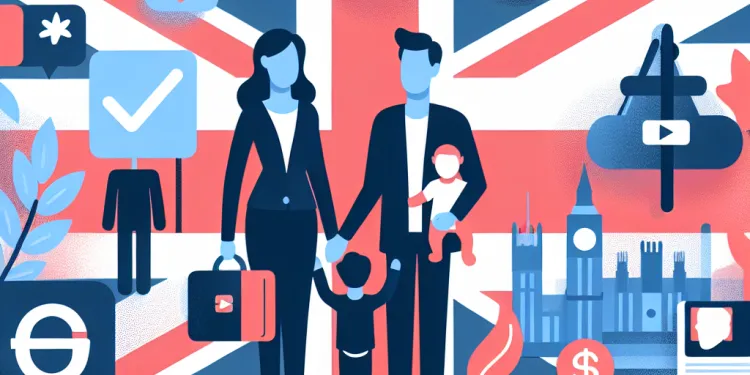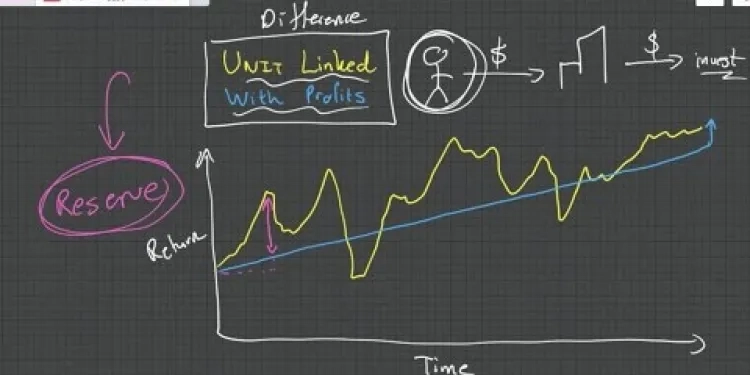
Find Help
More Items From Ergsy search
-

Upcoming Changes to Parental Leave Policies in the UK
Relevance: 100%
-

Navigating the Changes to Parental Leave Regulations
Relevance: 73%
-

Can bereavement leave be taken consecutively with other leaves?
Relevance: 55%
-

What is bereavement leave?
Relevance: 53%
-

Am I entitled to Bereavement Leave?
Relevance: 52%
-

Can I be denied bereavement leave?
Relevance: 51%
-

Is bereavement leave the same as compassionate leave?
Relevance: 50%
-

How many days of bereavement leave can I take?
Relevance: 50%
-

Can bereavement leave be counted against my PTO?
Relevance: 50%
-

Does bereavement leave cover travel costs?
Relevance: 49%
-

Do I get paid for bereavement leave?
Relevance: 49%
-

Can I extend my bereavement leave?
Relevance: 48%
-

Are part-time employees entitled to bereavement leave?
Relevance: 48%
-

What documentation might I need for bereavement leave?
Relevance: 45%
-

Can I take bereavement leave for the death of a close friend?
Relevance: 44%
-

How should I request bereavement leave?
Relevance: 43%
-

Does bereavement leave cover funerals for cultures or religions with extended mourning periods?
Relevance: 40%
-

How are parents involved in the SEND process?
Relevance: 37%
-

Are gig workers entitled to sick leave?
Relevance: 36%
-

What healthcare policies should support workers be aware of?
Relevance: 35%
-

Navigating Legal Guardianship and Parental Responsibility in the UK
Relevance: 34%
-

How can parents provide feedback on school meals?
Relevance: 33%
-

Understanding Parental Rights in Light of New UK Child Protection Legislation
Relevance: 33%
-

Exercise Routines for Busy Parents
Relevance: 32%
-

Could parents override a social media ban for their under 16 children?
Relevance: 31%
-

What changes affect pet policies in rented homes?
Relevance: 30%
-

Life Insurance Difference between Unit Linked and With Profit Policies
Relevance: 30%
-

Can parents provide packed lunches instead of school meals?
Relevance: 30%
-

What is the role of parental monitoring in children's screen time and sleep?
Relevance: 30%
-

How does inheritance tax apply to life insurance policies?
Relevance: 29%
-

How can government policies influence transparency in banking fees?
Relevance: 29%
-

What advice is available for parents concerned about autism risks?
Relevance: 28%
-

Emergency Legal Guidance: Navigating the Impact of Sudden Policy Changes on Families
Relevance: 28%
-

The Devious Car Insurance Scam Hidden In Your Policy! And How to Deal With it
Relevance: 28%
-

How does leaving the fire service before pension age affect my benefits?
Relevance: 28%
-

How can parents advocate for their SEND child?
Relevance: 28%
-

Parent guide to club foot stretches: Step 1
Relevance: 24%
-

Am I legally entitled to bereavement leave?
Relevance: 19%
-

How are food allergies managed in UK schools?
Relevance: 19%
-

What Happens To Investments and Pensions | Moving Abroad | Leaving the UK
Relevance: 18%
Upcoming Changes to Parental Leave Policies in the UK
Introduction to the New Parental Leave Policies
The United Kingdom is set to implement significant changes to its parental leave policies, aimed at providing more flexible and equitable options for new parents. These changes are designed to accommodate diverse family structures and modernize the existing framework. With these upcoming reforms, the UK government hopes to support working families better and promote a more balanced sharing of childcare responsibilities.
Extended Leave for Both Parents
Under the new regulations, both parents will be entitled to an extended period of leave. Currently, mothers can take up to 52 weeks of maternity leave, whereas fathers or partners have been limited to just 2 weeks of paternity leave. The upcoming changes will introduce shared parental leave, allowing both parents to split up to 50 weeks of leave between them. This initiative is aimed at fostering gender equality by encouraging fathers to take a more active role in childcare.
Increased Financial Support
The upcoming changes also include an overhaul of the financial support provided to new parents. Statutory Maternity Pay (SMP) and Statutory Paternity Pay (SPP) will see increases, making it more feasible for parents to take time off work to care for their newborns without suffering undue financial strain. Moreover, the introduction of a new statutory paid parental leave rate will simplify the benefits system and ensure that parents receive consistent support.
Enhanced Flexibility in Leave Scheduling
Recognizing the diverse needs of modern families, the government will introduce greater flexibility in how parental leave can be scheduled. Parents will have the ability to take leave in blocks of time, instead of having to take it all at once. This change is designed to provide parents with the opportunity to return to work intermittently if they choose, thus offering greater career continuity while still prioritizing their child's early development.
Support for Self-Employed Parents
Another important aspect of the new parental leave policies is the inclusion of better support for self-employed parents. Historically, self-employed mothers and fathers have faced significant challenges in accessing parental leave benefits. The upcoming reforms will include provisions to extend comparable benefits to self-employed individuals, ensuring they are not left behind and can also benefit from ample time to care for their children.
Conclusion
The upcoming changes to parental leave policies in the UK represent a significant shift towards more inclusive and flexible support for new parents. By extending leave entitlements, increasing financial support, and allowing for more flexible scheduling, the government aims to create a more equitable environment for all families. These measures signify a progressive step forward in recognizing the importance of work-life balance and the critical role of both parents in early child development.
Upcoming Changes to Parental Leave Policies in the UK
Introduction to the New Parental Leave Policies
The UK is making changes to parental leave. This is to help new families better. The changes will give parents more options for taking time off work. The changes hope to help parents share looking after their children more equally.
Extended Leave for Both Parents
Now, only mothers can take long leave, up to 52 weeks. Fathers only get 2 weeks. The new changes will let both parents share up to 50 weeks between them. This will help fathers be more involved in caring for their children.
Increased Financial Support
The changes will also mean more money help for parents. Maternity and paternity pay will go up. This will help parents take time off work without worrying about money. There will be a new pay rate for all parents to make things simple and fair.
Enhanced Flexibility in Leave Scheduling
Parents will be able to take leave in blocks, not all at once. This means parents can go back to work if they want and then take more leave later. This helps parents keep their jobs while still caring for their child.
Support for Self-Employed Parents
Self-employed parents often find it hard to get help. The new rules will help them too. They will get benefits so they can take time to care for their children like everyone else.
Conclusion
The changes in the UK will help all families. By giving more leave, more money, and flexible times, parents can have a better balance between work and family. These changes show how important it is for both parents to spend time with their young children.
Frequently Asked Questions
What is the new parental leave policy in the UK?
The new parental leave policy in the UK allows parents to share up to 50 weeks of leave and up to 37 weeks of pay between them, offering greater flexibility in how they take time off work to care for their child.
When does the new parental leave policy come into effect?
The new parental leave policy will come into effect on April 1, 2024.
Who is eligible for the new shared parental leave?
Parents who have been employed continuously for at least 26 weeks by the end of the 15th week before the baby is due are eligible for the new shared parental leave.
How do parents apply for the new shared parental leave?
Parents must notify their employers in writing at least eight weeks before they intend to start shared parental leave, providing details of the leave plans and declarations from both parents.
Can both parents take shared parental leave at the same time?
Yes, both parents can be on shared parental leave at the same time, or they can stagger the leave between them. This provides greater flexibility for families.
What happens to maternity and paternity leave with the new policy?
Mothers can still take maternity leave, and fathers can take paternity leave. However, the new policy allows parents to share remaining leave and pay after the initial periods are taken.
Can shared parental leave be taken in blocks?
Yes, shared parental leave can be taken in up to three separate blocks, with periods of work in between, depending on the agreement with the employer.
How much pay do parents receive during shared parental leave?
Parents will receive statutory shared parental pay, which is calculated at the rate of £156.66 per week or 90% of their average weekly earnings, whichever is lower.
Do self-employed parents qualify for shared parental leave?
No, self-employed individuals are not eligible for shared parental leave. However, they may have other entitlements depending on their circumstances.
Can the shared parental leave be transferred between parents?
Yes, shared parental leave can be transferred between parents, allowing them to decide how to allocate the leave based on their needs.
Are parents on shared parental leave entitled to redundancy protection?
Yes, parents on shared parental leave have the same redundancy protection as those on maternity or paternity leave.
Can same-sex couples take advantage of the new shared parental leave?
Yes, the new shared parental leave policy applies to all parents, including same-sex couples and adoptive parents.
What happens if a parent decides to return to work early from shared parental leave?
If a parent decides to return to work early, they must give their employer at least eight weeks' notice. The remaining leave can be taken by the other parent if desired.
Are parents required to take all 50 weeks of shared parental leave?
No, parents are not required to take all 50 weeks of shared parental leave. They can take as much or as little leave as they choose, provided they comply with the notification requirements.
How will the new shared parental leave benefits be funded?
Similar to maternity and paternity leave, shared parental leave benefits will be funded through the government's statutory parental pay system, supported by national insurance contributions.
What are the new rules for parents taking time off work in the UK?
The UK has new rules for parents taking time off work. Let's find out more about these rules.
If you are a parent and live in the UK, you might be able to take time off from your job to look after your child. This is called "parental leave".
There are new rules about how much time you can take off and how it works. It's important to check what these rules are so you know what you can do.
If reading is hard, you can use a computer or phone program that reads the words out loud to you. This can help you understand better.
If you need help, ask someone you trust to explain the rules to you.
The new parent leave rule in the UK lets parents share time off from work. Parents can take up to 50 weeks off to care for their child. They can also share up to 37 weeks of pay. This gives parents more choices on how to look after their child.
To make it easier, parents can use a calendar to plan their leave. Talking to other parents or asking an expert for advice can also help them make good choices.
When does the new parental leave rule start?
Here is some helpful advice:
- Ask someone to help you understand.
- Use a calendar to mark important dates.
The new rules for time off for parents will start on April 1, 2024.
Who can take the new shared parental leave?
To take the new shared parental leave, parents have to work for the same employer for at least 26 weeks before 15 weeks from when the baby is expected to be born.
How can parents ask for the new shared parental leave?
Parents can take time off work after having a baby. This is called "shared parental leave." Here is how parents can ask for this leave:
1. Talk to Your Employer:
Parents should talk to the people they work for. They need to tell them they want shared parental leave.
2. Plan the Time Off:
Parents should decide when and how long they want to take off. They can share this time between them.
3. Fill Out Forms:
Parents may need to fill out some forms. They can ask their employer if they need help with this.
If parents find it hard to understand, they can ask someone to help explain it. They can also use pictures or videos to learn more about shared parental leave.
Parents need to tell their boss in writing at least eight weeks before they want to start shared parental leave. They should include details about the leave and statements from both parents.
Can both parents take shared parental leave at the same time?
Can mum and dad stay home from work together to look after their baby?
Yes, they can! Mum and dad can both take time off work at the same time to look after their baby. This is called "shared parental leave."
If it's hard to understand, ask someone to help explain. It's okay to ask questions. Sometimes, pictures can help you understand better too!
Yes, both parents can take leave from work at the same time to take care of their baby. Or they can take turns staying home. This helps families have more choices.
What changes with the new rules for maternity and paternity leave?
The new rules are about time off for new parents. This is called maternity leave for mothers and paternity leave for fathers. The rules might change how much time you can take off when you have a new baby.
If you need help, you can:
- Ask someone to explain it to you.
- Use a simple website to understand more.
- Speak to a friendly person at work who knows about the new rules.
Mums can still take time off when they have a baby. This is called maternity leave. Dads can take time off too. This is called paternity leave. Now, mums and dads can also share the rest of their time off and pay after those first leaves are used.
If reading is tricky, try using a reading ruler or listening to someone read aloud.
Can parents take turns staying home with their baby?
Parents can take time off work to be with their new baby. They can take turns or split the time into smaller parts if they want. Parents can plan together when to stay home. Try using a calendar to help plan the days. Talking with work early can also help.Yes, you can take shared parental leave in three parts. You might work in between those times. Talk to your boss to plan this.
How much money do parents get during shared parental leave?
When parents take time off to care for a new baby, they can share this leave. This is called shared parental leave.
While on leave, parents might get some money. This money is called pay.
To find out how much pay you might get, you can:
- Ask your boss or manager.
- Check money help websites.
- Talk to friends who have taken shared parental leave.
These steps can help you understand your pay during shared parental leave.
Parents can get some money when they share time off to look after their baby. They will get £156.66 each week, or 90% of what they usually earn each week, whichever is less.
Can self-employed parents take shared parental leave?
Self-employed parents might not get shared parental leave, but there are other ways to get help.
Here are some things you can do:
- Check for other support, like tax credits or childcare help.
- Talk to a support group for advice.
- Ask someone who understands the rules.
No, people who work for themselves cannot take shared parental leave.
But they might have other options. It depends on their situation.
Can parents swap their shared parental leave?
Parents can share time off to take care of their baby. They may also swap this time between each other.
Here are some tools and techniques that could help:
- Use a calendar to plan who takes time off and when.
- Talk to each other about who needs the time off most.
- Ask your work how to arrange shared leave.
Yes, parents can share time off work when they have a new baby. They can decide who takes the time off and how much time each person takes.
Do parents who share time off work to care for a baby have job protection if their job is taken away?
Yes, if a mom or dad is taking time off work to care for a baby, they have the same job protection as when moms or dads take time off to have a baby.
Can same-sex couples use the new shared parental leave?
If two people of the same sex have a baby, can they both take time off to care for their baby?
You can find out by asking someone who knows the rules about time off work for parents. They can explain the new shared parental leave and how it works.
If you find reading hard, maybe ask a friend, family member, or a support person to help you understand. They can read with you or explain what things mean.
Yes, all parents can use the new shared parental leave. This includes same-sex couples and parents who adopt children.
If a parent goes back to work early from shared parental leave, what happens?
Sometimes, a parent might need to stop their time off and go back to work sooner than planned. Here’s what they should do:
- Tell their boss: It’s important to let the employer know if the plan changes.
- Check the rules: Different places have different rules about changing leave plans.
- Ask for help: Talking to someone who knows the rules, like HR or a manager, can be useful.
- Write it down: Make sure changes are written and agreed upon.
Using reminders or asking a friend for help can make these steps easier. Make sure to talk to someone at work if you have questions.
If a mom or dad wants to go back to work early, they need to tell their boss eight weeks before. The other parent can take the time off if they want to.
Do parents have to use all 50 weeks of shared parental leave?
No, parents do not have to take all 50 weeks of shared parental leave. They can choose how much leave to take. They just need to let their boss know what they decide.
Who will pay for the new shared parental leave?
This question asks about money. It wants to know who gives money for parents to take time off work.
When parents have a baby, they need time to stay at home. This is called parental leave. The new rule lets both parents share this time off.
To understand how this works, people can use simple charts or ask an adult to explain. Videos or pictures might also help.
Just like when new mums and dads take time off work, people sharing baby care will get money. This money comes from the government. It is helped by other workers paying a bit of their money, too.
Useful Links
- Ergsy carfully checks the information in the videos we provide here.
- Videos shown by Youtube after a video has completed, have NOT been reviewed by ERGSY.
- To view, click the arrow in centre of video.
- Most of the videos you find here will have subtitles and/or closed captions available.
- You may need to turn these on, and choose your preferred language.
- Go to the video you'd like to watch.
- If closed captions (CC) are available, settings will be visible on the bottom right of the video player.
- To turn on Captions, click settings .
- To turn off Captions, click settings again.
More Items From Ergsy search
-

Upcoming Changes to Parental Leave Policies in the UK
Relevance: 100%
-

Navigating the Changes to Parental Leave Regulations
Relevance: 73%
-

Can bereavement leave be taken consecutively with other leaves?
Relevance: 55%
-

What is bereavement leave?
Relevance: 53%
-

Am I entitled to Bereavement Leave?
Relevance: 52%
-

Can I be denied bereavement leave?
Relevance: 51%
-

Is bereavement leave the same as compassionate leave?
Relevance: 50%
-

How many days of bereavement leave can I take?
Relevance: 50%
-

Can bereavement leave be counted against my PTO?
Relevance: 50%
-

Does bereavement leave cover travel costs?
Relevance: 49%
-

Do I get paid for bereavement leave?
Relevance: 49%
-

Can I extend my bereavement leave?
Relevance: 48%
-

Are part-time employees entitled to bereavement leave?
Relevance: 48%
-

What documentation might I need for bereavement leave?
Relevance: 45%
-

Can I take bereavement leave for the death of a close friend?
Relevance: 44%
-

How should I request bereavement leave?
Relevance: 43%
-

Does bereavement leave cover funerals for cultures or religions with extended mourning periods?
Relevance: 40%
-

How are parents involved in the SEND process?
Relevance: 37%
-

Are gig workers entitled to sick leave?
Relevance: 36%
-

What healthcare policies should support workers be aware of?
Relevance: 35%
-

Navigating Legal Guardianship and Parental Responsibility in the UK
Relevance: 34%
-

How can parents provide feedback on school meals?
Relevance: 33%
-

Understanding Parental Rights in Light of New UK Child Protection Legislation
Relevance: 33%
-

Exercise Routines for Busy Parents
Relevance: 32%
-

Could parents override a social media ban for their under 16 children?
Relevance: 31%
-

What changes affect pet policies in rented homes?
Relevance: 30%
-

Life Insurance Difference between Unit Linked and With Profit Policies
Relevance: 30%
-

Can parents provide packed lunches instead of school meals?
Relevance: 30%
-

What is the role of parental monitoring in children's screen time and sleep?
Relevance: 30%
-

How does inheritance tax apply to life insurance policies?
Relevance: 29%
-

How can government policies influence transparency in banking fees?
Relevance: 29%
-

What advice is available for parents concerned about autism risks?
Relevance: 28%
-

Emergency Legal Guidance: Navigating the Impact of Sudden Policy Changes on Families
Relevance: 28%
-

The Devious Car Insurance Scam Hidden In Your Policy! And How to Deal With it
Relevance: 28%
-

How does leaving the fire service before pension age affect my benefits?
Relevance: 28%
-

How can parents advocate for their SEND child?
Relevance: 28%
-

Parent guide to club foot stretches: Step 1
Relevance: 24%
-

Am I legally entitled to bereavement leave?
Relevance: 19%
-

How are food allergies managed in UK schools?
Relevance: 19%
-

What Happens To Investments and Pensions | Moving Abroad | Leaving the UK
Relevance: 18%


